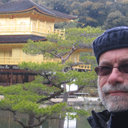Crop management, genotypes, and environmental factors affect soyasaponin B concentration in soybean.
Keywords
Abstract
Soybean [Glycine max (L.) Merr.] seeds contain soyasaponin B, which has putative health benefits. Studies were conducted in multiple environments in Quebec, Canada to determine the effects of genotypes, environments, and seeding dates on soyasaponin B concentration in mature seeds. A growth chamber study was also conducted to determine the impact of high air temperature imposed at specific growth development stages on soyasaponin B in soybeans. Concentrations of individual and total soyasaponin B were determined using high-performance liquid chromatography. Genotype and environment main effects were the main determinants of soyasaponin B concentration in soybean, genotype × environment interactions accounting for less than 5% of the variation for all soyasaponin. Ranking of 20 early maturing soybean genotypes was thus relatively consistent across four environments, total concentration varying between 2.31 and 6.59 μmol g(-1). Seeding date consistently impacted soyasaponin B concentrations, early seeding date resulting in the highest concentrations. There was an 11% difference in total soyasaponin B concentration of soybeans seeded in mid-May compared to that in late-June. The response to high air temperature was complex and cultivar specific. High temperature stress restricted to the seed filling stages increased total soyasaponin B concentration in one cultivar by 28% when compared to that in control nonstressed plants; however, in another cultivar high temperature applied during all growth stages reduced total concentration by 27%. Results from the present study thus demonstrate that environmental factors and crop management both impact soyasaponin B concentration in soybeans.


